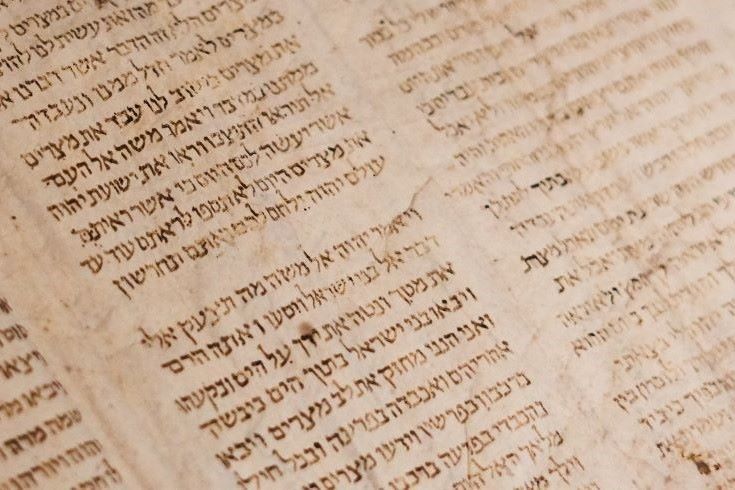Leavening and Lusty Hearts: Reconstructing the Bible’s Levivot
Feb. 28, 2020
By Esther Brownsmith
 Most people, when they read 2 Samuel 13, are horrified by its tragic contents. Amnon, the firstborn son of King David, falls in love with his half-sister Tamar. He devises a plan to get her alone, then despite her vocal protests, he rapes her. Afterwards, he brutally rejects her and throws her out. The story is tragic from start to finish — and it sparks a widening spiral of bloody revenge.
Most people, when they read 2 Samuel 13, are horrified by its tragic contents. Amnon, the firstborn son of King David, falls in love with his half-sister Tamar. He devises a plan to get her alone, then despite her vocal protests, he rapes her. Afterwards, he brutally rejects her and throws her out. The story is tragic from start to finish — and it sparks a widening spiral of bloody revenge.
In short, when most people read 2 Samuel 13, they are not reading it as a recipe. But I am.
Amnon's scheme relies on feigning illness, then asking for his sister to prepare him a special food, which she would hand-feed to him. That food is variously called bread (לחם), sustenance (בריה), and levivot (לבבות) — the latter a plural term that does not appear elsewhere in the Bible. Yet this term is crucial to understanding the eroticized atmosphere of the passage, which paints for us a picture of Amnon's lascivious point of view. Thus, when I examined this passage as part of my doctoral dissertation, I decided that one of my tasks would be to recreate these levivot to search for clues to their significance.
Of course, the Bible does not provide a recipe for levivot, nor do other ancient Jewish texts, while modern Hebrew uses it as a name for latkes. A Google search for מתכוני לביבות (levivot recipes) results in many delicious photographs of potato pancakes, none of which resemble what Tamar made for Amnon. Instead, I turned to a combination of textual clues and culinary history.
Here's what we know about the levivot:
Their name had passionate connotations. The heart (lev), which seems to form the basis for the word, was the seat of thought and emotion to ancient Israelites. Meanwhile, the root word לבב (L-B-B) had definite connotations of sexual desire in both Song of Songs 4:9 and Ezekiel 16:30, and the heart was a metaphor for arousal in Mesopotamian texts, like an incantation to help a man whose " 'heart' does not rise for him." As final evidence that the levivot had indecent connotations, a careful reading of 2 Samuel 13 reveals that King David and Jonadab avoid using the term; only Amnon and the narrator (who reflects Amnon's lustful thoughts) use it to describe the food.
… But they weren't "heart-shaped as we know it. Many scholars explain that their name means they were "heart-shaped" — but the heart shape, familiar to us from Valentines and emoticons, only dates back to the medieval period. In the ancient world, "heart-shaped" would have connoted a vaguely conical lump.
They were boiled in water. The Hebrew Bible makes this clear, even though most English translations say that they were baked. When Tamar cooks the levivot, the verb is בשׁל (B-Š-L), "to boil"; once she finishes boiling them, she pours them out יצק (Y-Ṣ-Q) to drain them. Later Jewish writings, like David Kimḥi's commentary on 2 Samuel 13:6, corroborate that they were understood to be boiled in water.
They were made of kneaded dough. As part of her preparations, Tamar kneads לוש (L-W-Š) the dough. From a culinary viewpoint, this step is important, as it distinguishes the levivot from modern American dumplings. Kneading activates the gluten in flour, which gives yeasted breads their springy, chewy texture; in contrast, American dumplings are kneaded as little as possible, so that they retain a fluffy, tender texture.
Their composition included flour and other ingredients. This clue can only be inferred from the biblical text’s description of "dough," which generally comes from flour, and the fact that they were a sickbed delicacy (and therefore probably contained fat and sugar to appeal to the palate). However, Maimonides corroborates it in the Mishneh Torah when he gives levivot as an example of a boiled food made of flour mixed with "other things" (Blessings, ch.3).
Based on these clues, I began to research boiled breads. I discovered that although boiled bread is not typical in modern American cuisine — even bagels are baked after being boiled — it has a rich history elsewhere in the world. Boiled bread ranges from Zulu ujeqe to German Hefeklösse, not to mention steamed breads like Chinese mantou. These bread rolls are a hearty dish, yet light and fluffy from their yeasted dough. For instance, one cookbook writes that "Hefeklösse mit Zimmetsosse (yeast dumplings with cinnamon sauce) were considered a meal in itself. When the cooks took the time to prepare dumplings with cinnamon sauce, the usual meat course was not served."
Armed with this evidence that boiled bread was a real culinary possibility, I found a recipe for Hefeklösse and got to work. I knew that many of the ingredients would have to be modified, as the ancient world lacked ultra-refined ingredients like white sugar and white flour. I substituted whole wheat flour and date paste, which was the main sweetener in the ancient Near East. Most biblical mentions of "honey" actually refer to date syrup.
Moreover, the fat to use was unclear. Butter was rare in the warm weather of ancient Israel, and animal fat adds an unpleasantly savory flavor to the bread, as I discovered in an early trial. Olives were abundant in ancient Israel, but there is some scholarly debate about whether their oil was used in this period for culinary purposes, as opposed to anointing, burning for light, etc. In Mesopotamia, sesame oil was the primary oil used in cooking, and I found it added a mild, pleasant flavor. I used untoasted sesame oil, not the toasted oil used in many Asian recipes, which has a much stronger taste.
The stage was set for my final culinary experiment — and the final clue in my theory. When Amnon asks Tamar to make him the levivot, he doesn’t merely ask for "some levivot"; he asks specifically for "two levivot." So I went through the same stages of cooking as Tamar — I kneaded the dough, shaped the rolls, boiled them, and drained them — and then I put exactly two levivot on a plate together. Sure enough, the plump, pale brown orbs bore a distinct resemblance to a woman’s bosom.
My theory had held: not only did the name levivot contain a certain level of innuendo, but the very appearance of two levivot had an erotic flair. Amnon knew exactly what he was asking for when he requested two levivot from his sister, and it wasn't just an innocent snack.
Despite their disturbing history, though, levivot clearly continued to be eaten in Jewish communities into the Middle Ages, as the writings of Kimḥi and Maimonides attest. With the tenderness of Chinese steamed buns, they are a mildly sweet, fluffy treat, as well as a way to make bread without turning on an oven. The recipe below makes 12 large levivot — perfect for feeding the people close to your heart.
Reconstructed Levivot Recipe
60g lukewarm water (1/4 cup)
57g date paste or well-mashed Medjool dates (1/4 cup)
7g active dry yeast (1 packet)
57g fat, such as untoasted sesame oil or butter (1/4 cup)
180g lukewarm water (3/4 cup)
6g salt (1 tsp)
395g whole wheat flour, ideally einkorn or emmer (3 1/2 cups)
- Mix together the 60g water and date paste, then stir in the yeast. Let sit in a warm place for 5 minutes, until the mixture is very frothy.
- In a large bowl, mix together the yeast mixture with all the remaining ingredients.
- Using the kneading hook of a mixer, or your own arms, knead the dough for several minutes (at least ten if by hand). Add more water if necessary for a supple, tender dough. By the end of kneading, the dough should be stretchy and smooth.
- Cover the bowl with a towel and let rise in a warm place for 1 hour, or until the dough is doubled in volume.
- Punch down the dough and knead it a few times. Divide the dough into twelve equal portions, then shape each portion into round rolls. Space out the rolls on a large tray and let rise in a warm place for 30-45 minutes, or until very puffy.
- Meanwhile, in a large pot, bring several inches of water to a boil. Reduce heat to a steady simmer.
- When the rolls have risen, use a slotted spoon to lower six of them into the water, one by one. Cover, return to a simmer, and simmer for 10 minutes. Do not remove the lid while cooking. When done, the rolls should be firm to the touch. Remove with a slotted spoon, and repeat with the remaining six rolls.
- Serve warm, with butter and optional honey.
 Esther Brownsmith, a doctoral student at Brandeis, is an HBI Scholar in Residence. She was recently awarded a prestigious post-doc at the MF Norwegian School of Theology and the Norwegian Academy of Sciences and Letters where she will work on the broader project, "Books Known Only by Title: Exploring the Gendered Structures of the First Millennium Imagined Library." The title of her project is " 'But she said…': (Para)biblical Expansions as Fan Fiction."
Esther Brownsmith, a doctoral student at Brandeis, is an HBI Scholar in Residence. She was recently awarded a prestigious post-doc at the MF Norwegian School of Theology and the Norwegian Academy of Sciences and Letters where she will work on the broader project, "Books Known Only by Title: Exploring the Gendered Structures of the First Millennium Imagined Library." The title of her project is " 'But she said…': (Para)biblical Expansions as Fan Fiction."